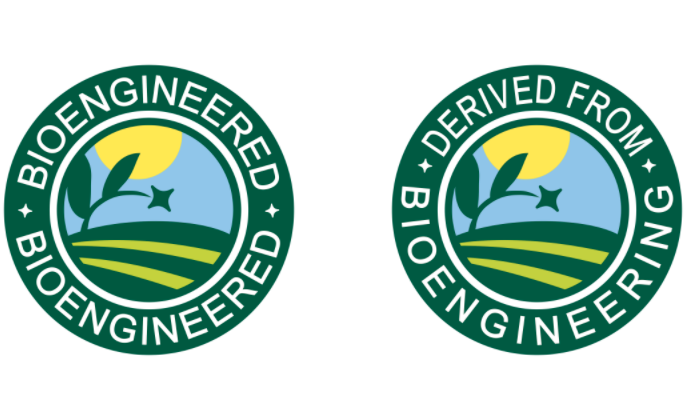
Starting January 1, 2022, companies that label foods for retail sale — i.e., food manufacturers, importers, and some retailers — will need to be in compliance with the National Bioengineered (BE) Food Disclosure Standard (NBFDS), which was passed by Congress in July, 2016.
This standard requires that companies disclose foods that are or may be bioengineered, defined as containing “detectable genetic material that has been modified through certain lab techniques and cannot be created through conventional breeding or found in nature.”
There are a number of compliance options, including text, symbol, electronic or digital link, and/or text message, as well as a phone number or web address for certain types of companies and products. To learn more about the regulation, as well as what companies can do now to ensure they’re ready by the deadline, we interviewed Anna Thibaut, senior solutions consultant at Label Insight, which provides a product attribute metadata solution for CPG brands and retailers.
The deadline for compliance with the NBFDS is coming up on January 1, 2022. What exactly does the new rule require and who is subject to it?
 AT: Simply put, the standard requires that manufacturers of food and beverage products disclose their use of bioengineered ingredients so that consumers can make informed purchasing decisions. Bioengineered ingredients are more commonly known to consumers as GMOs, and are crops that have been genetically altered to achieve a certain effect, such as pest or drought resistance.
AT: Simply put, the standard requires that manufacturers of food and beverage products disclose their use of bioengineered ingredients so that consumers can make informed purchasing decisions. Bioengineered ingredients are more commonly known to consumers as GMOs, and are crops that have been genetically altered to achieve a certain effect, such as pest or drought resistance.
Manufacturers of food products as well as importers who sell food products in the US will fall under the standard. Generally speaking, any product regulated as a food under the Federal Food, Drug and Cosmetic Act needs to disclose their bioengineering status by January. There are a few exemptions, such as products whose first ingredient is meat, poultry, or eggs. Or products whose first ingredient is water or broth and second ingredient is meat, poultry, or eggs. These products are actually regulated under the Food Safety and Inspection Service and are therefore exempt from this regulation. Also very small food manufacturers are exempt. That would be manufacturers with annual receipts of less than $2.5 million.
Are there any common misconceptions or areas of confusion about the rule?
AT: There are a number of challenges that brands are facing today. I was just in a conversation with a regulatory manager from a large manufacturer who was telling me they use multiple ingredient suppliers to make their products, and they don’t actually have access to the BE status of those ingredients they are purchasing today. To be able to accurately know if their products contain bioengineered ingredients, they’re having to petition their ingredient suppliers for information. It can be difficult to obtain this information from ingredient suppliers, particularly if the supplier is international and doesn’t understand all of the context behind this US-based regulation.
On top of that, many food manufacturers are accustomed to being regulated by the FDA, but this standard is coming from the USDA. Some manufacturers didn’t even know the standard applied to them until just recently.
What options do food manufacturers have for making the disclosures?
AT: This is far from a one-size-fits-all regulation. Manufacturers have the option of on-package text, an on-package symbol, a text message prompt, or digital disclosure via a QR code or other scannable technology. Many of the brands we talk to are opting for digital disclosure as a more flexible option for compliance. It can be less costly and time-consuming than labeling updates and allows for more flexibility if the BE status of their products changes or new transparency regulations get passed.
Consumers have been demanding more label transparency for a while now. Can you speak to the strides companies have already made to provide consumers with more information about what’s in their food?
AT: The first thing that comes to mind for me is the SmartLabelTM initiative, which was started by the Consumer Brands Association in partnership with a group of consumer companies and retailers. It is a digital version of product labels that provides consumers with information far beyond what is available on the label. Best-in-class SmartLabel pages include information such as ingredient descriptions, sustainability information, allergen information beyond what is required on-package, and voluntary flavor or fragrance ingredient transparency.
Retailers are also making big strides to offer their customers more information about the foods they are purchasing. For example, Target’s wellness icon program, which makes it easier for consumers to shop by need-state both online and in store. This program makes it easy to shop for products that are non-GMO, gluten-free, nutritious, or contain only simple ingredients.
What steps should companies take right now to ensure they’re ready for the deadline?
AT: Companies need to make sure they are involving all their key stakeholders when making compliance decisions. I would suggest activating at least their regulatory team, their marketing team, and their brand management teams to make sure they are choosing the compliance option that makes the most sense across the board. If they haven’t already, they need to start reaching out to their ingredient suppliers to get information about which products in their portfolio require bioengineering disclosure. Label refreshes can take significant time, so I would recommend making any label updates needed absolutely as soon as possible. If a company has chosen the digital option, it is easiest to work with a technology partner that can create QR codes and easily link those QR codes to the applicable bioengineering information.
For more information on the NBFDS, visit the USDA’s BE Disclosure website.







